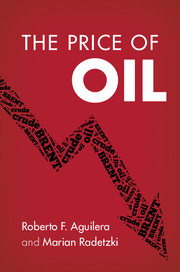Book contents
- Frontmatter
- Contents
- Figures
- Tables
- Acknowledgments
- 1 Introduction and overview
- PART I OIL'S EXTRAORDINARY PRICE HISTORY: HOW CAN IT BE EXPLAINED?
- PART II THE SHALE AND CONVENTIONAL OIL REVOLUTIONS: LOW PRICES AHEAD
- 7 The shale revolution: US achievements to date and envisaged impacts on global energy markets
- 8 Longevity of US shale oil: have we only seen the beginning?
- 9 The conventional oil revolution
- 10 Environmental issues arising from the revolutions
- 11 Will the revolutions spread globally?
- 12 A substantial long-term price fall in store
- PART III GLOBAL IMPLICATIONS FOR THE MACROECONOMY, THE ENVIRONMENT AND FOR POLITICS
- CONCLUSIONS
- References
- Index
11 - Will the revolutions spread globally?
from PART II - THE SHALE AND CONVENTIONAL OIL REVOLUTIONS: LOW PRICES AHEAD
Published online by Cambridge University Press: 05 November 2015
- Frontmatter
- Contents
- Figures
- Tables
- Acknowledgments
- 1 Introduction and overview
- PART I OIL'S EXTRAORDINARY PRICE HISTORY: HOW CAN IT BE EXPLAINED?
- PART II THE SHALE AND CONVENTIONAL OIL REVOLUTIONS: LOW PRICES AHEAD
- 7 The shale revolution: US achievements to date and envisaged impacts on global energy markets
- 8 Longevity of US shale oil: have we only seen the beginning?
- 9 The conventional oil revolution
- 10 Environmental issues arising from the revolutions
- 11 Will the revolutions spread globally?
- 12 A substantial long-term price fall in store
- PART III GLOBAL IMPLICATIONS FOR THE MACROECONOMY, THE ENVIRONMENT AND FOR POLITICS
- CONCLUSIONS
- References
- Index
Summary
If there is doubt by so many experts and commentators about the staying power of shale oil in the US, then the uncertainty is even greater for the rest of the world's prospects. This chapter attempts to answer the question of whether or not the shale and conventional oil revolutions will extend around the globe, with a heavy emphasis on shale. In short, the likely answer is yes, they will. The shale resource base is widely spread and there is potential for diffusion of technology to the ROW, even though we know little about the quality of the resources compared with those in the US – though it is hard to believe that the US would be exceptional in this respect. The crucial matter is when the shale revolution will occur in different country categories. Our attempt to deal with this issue begins by illuminating the reasons for the US lead in shale and how long the ROW will take to get going. We then broaden the vista to consider what may occur and where, as the ROW overcomes its inhibitions and constraints and jumps on the shale oil bandwagon. We also speculate about what can be reasonably expected in the coming decades for the global conventional oil revolution.
A US PHENOMENON, FOR NOW
A brief list of circumstances, frequently reported in shale oil studies, suffices to explain what caused the US to take and to maintain a vanguard position in this field. First, of course, is a favorable resource wealth, though many countries share this characteristic with the US. A long history of large-scale oil exploitation guaranteed a technological prominence and a physical infrastructure for conventional oil exploitation. Both could be easily converted to the needs of shale oil. The general institutional infrastructure, needed to promote innovative entrepreneurial activities, was prominent and could be readily applied for the development of shale oil. Sparse population reduced environmental sensitivities. Another facilitating circumstance is that US legislation grants the landholder ownership rights to what is underground, a rule not applied by many other countries. Thus, land rights problems are avoided in the US, since the landholder is in control and benefits from royalty payments. The country's long tradition of small, adventurous exploration and production enterprises helped to speed up the revolutionary process.
- Type
- Chapter
- Information
- The Price of Oil , pp. 135 - 156Publisher: Cambridge University PressPrint publication year: 2015

